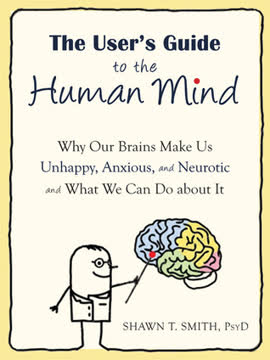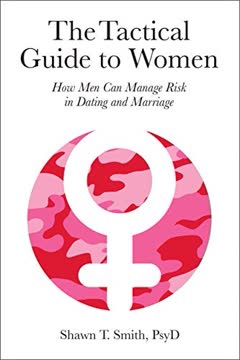Key Takeaways
1. Our minds are ancient survival machines, not happiness generators
"For the human spirit, that safe zone represents stagnation. It is where depression, rumination, avoidance, and anxiety live."
The mind prioritizes survival over happiness. Shaped by millions of years of evolution, our brains are wired to detect threats and avoid danger. This hypervigilance served our ancestors well but can lead to excessive anxiety, depression, and avoidance behaviors in our relatively safe modern world. The mind's constant chatter and worry are not malfunctions, but features of a well-oiled survival machine.
Understanding the mind's true nature is liberating. When we realize that our minds are not designed to make us happy, but to keep us alive, we can approach our thoughts and feelings with more compassion and less judgment. This perspective allows us to:
- Recognize that negative thoughts and emotions are normal, not personal failings
- Stop fighting against our minds and instead work with them
- Make conscious choices based on our values, rather than reflexively obeying our minds' fearful impulses
2. Thoughts and feelings are not facts, but fleeting mental activities
"Thoughts are not facts."
Mental experiences are transient phenomena. Our thoughts and feelings, no matter how compelling or intense, are not literal representations of reality. They are temporary mental events, like clouds passing through the sky of our consciousness. Recognizing this truth can help us avoid getting entangled in unproductive rumination or emotional spirals.
Practicing cognitive defusion is key. To gain distance from our thoughts and feelings:
- Use the phrase "I'm having the thought that..." to create separation
- Visualize thoughts as leaves floating down a stream or soldiers in a parade
- Notice the transient nature of emotions, even intense ones
- Remember that having a thought doesn't make it true or require action
3. Observe your mind without judgment to gain psychological flexibility
"Observing the mind is rather like praying or meditating, in that it can be complex and esoteric or as simple as you wish it to be."
Mindful observation increases freedom. By developing the ability to watch our minds at work without getting caught up in their content, we gain the power to choose our responses rather than reacting automatically. This psychological flexibility allows us to pursue our values even when our minds protest.
Practical techniques for mindful observation:
- Practice the "Tiny Soldiers on Parade" visualization exercise
- Use the "I am experiencing the thought..." technique
- Notice physical sensations associated with emotions
- Cultivate curiosity about your mind's activities, rather than trying to control them
4. Values-based living trumps mood-based decision making
"Clearly defined values can provide the motivation to drop the battle against the mind, the reason to disobey the mind, and the guidance to create a life of meaning."
Values provide direction when emotions mislead. Our moods and feelings are unreliable guides for decision-making. By clarifying our core values and using them as a compass, we can make choices that align with our deepest aspirations, even when our minds or emotions pull us in other directions.
Steps to values-based living:
- Identify your core values across different life domains
- Set specific, values-aligned goals
- Take small, consistent actions toward those goals
- Practice "opposite action" when emotions conflict with values
- Accept discomfort as part of pursuing meaningful goals
5. The mind's "trump cards" and double standards are protective but limiting
"Trump cards and double standards are part of the mind's survival logic. They exist for a reason, and sometimes they're right."
The mind employs powerful persuasion tactics. To keep us safe, our minds use "trump card" thoughts (e.g., "If you really knew me...") and double standards (being harsher on ourselves than others) to influence our behavior. While these strategies can be protective, they often limit our growth and relationships.
Strategies for managing trump cards and double standards:
- Recognize these patterns when they arise
- Question the evidence supporting these thoughts
- Consider alternative explanations or perspectives
- Practice self-compassion and extend the kindness you show others to yourself
- Take small risks to test the validity of these limiting beliefs
6. Embrace pessimism's evolutionary purpose while cultivating optimism
"Pessimism: The Ancient Cure for Modern Times"
Pessimism serves an adaptive function. Our tendency to anticipate and prepare for the worst has evolutionary roots. It helps us avoid dangers and solve problems. However, unchecked pessimism can lead to unnecessary suffering and missed opportunities.
Balancing pessimism and optimism:
- Use "defensive pessimism" to plan for potential obstacles
- Practice "strategic optimism" to maintain motivation and resilience
- Cultivate realistic optimism by considering both potential risks and rewards
- Remember that thoughts about the future are predictions, not facts
- Use Pascal's Wager-style thinking to make decisions under uncertainty
7. Quick fixes and addictions are the mind's misguided attempts at problem-solving
"The mind can drive us to 'fix' our problems though complex behaviors like drinking, compulsive shopping, or seeking out shallow sexual relationships, but it can operate in subtler ways as well."
Short-term relief often leads to long-term suffering. The mind's desire for immediate gratification and discomfort avoidance can lead to addictive behaviors and unhealthy coping mechanisms. These "quick fixes" provide temporary relief but often exacerbate the underlying problems.
Healthier approaches to problem-solving:
- Practice delaying gratification in small ways to build willpower
- Use mindfulness techniques to sit with discomfort rather than avoiding it
- Identify the function of addictive behaviors and find healthier alternatives
- Break large problems into smaller, manageable steps
- Seek professional help for persistent addictions or compulsions
8. Mood profoundly influences perception, memory, and behavior
"Mood can alter our perception like a new lens on a camera can alter the pictures it takes."
Our emotional state colors our reality. Mood affects how we perceive the world, what memories we can easily access, and how we interpret events. This can create self-reinforcing cycles of negative or positive experiences.
Strategies for managing mood's influence:
- Practice mood labeling to increase emotional awareness
- Use "opposite action" techniques to counteract mood-driven behavior
- Remember that "my mind might be wrong" when in extreme moods
- Engage in activities that cultivate positive emotions
- Seek professional help for persistent mood disorders
9. Healthy lifestyle habits fortify us against the mind's maladaptive tendencies
"Proper diet, sleep, and exercise can minimize bad moods and distorted perceptions, and they can help us resist a mind that is dragging us away from our values."
Physical well-being supports mental resilience. Basic lifestyle factors like nutrition, sleep, and exercise have a profound impact on our ability to manage our minds effectively. By prioritizing these foundational habits, we become less vulnerable to maladaptive thoughts and emotions.
Key lifestyle factors to optimize:
- Nutrition: Balance blood sugar, limit caffeine and alcohol, eat whole foods
- Sleep: Prioritize consistent sleep patterns and good sleep hygiene
- Exercise: Engage in regular physical activity, tailored to individual preferences
- Social connection: Cultivate supportive relationships and community
- Stress management: Practice relaxation techniques and set healthy boundaries
Last updated:
FAQ
1. What is "The User's Guide to the Human Mind" by Shawn T. Smith about?
- Understanding the Mind's Nature: The book explores why our brains often make us unhappy, anxious, or neurotic, and how these tendencies are rooted in evolutionary survival mechanisms.
- Practical User’s Manual: It serves as a practical guide for living with a mind that can be overprotective, intrusive, and sometimes self-defeating, offering strategies to coexist with it peacefully.
- Focus on Acceptance: The author emphasizes accepting the mind’s quirks rather than constantly battling or trying to control thoughts and feelings.
- Behavioral and Evolutionary Psychology: The book draws on concepts from third-wave behaviorism, especially Acceptance and Commitment Therapy (ACT), to help readers understand and manage their mental experiences.
2. Why should I read "The User's Guide to the Human Mind" by Shawn T. Smith?
- Relatable Struggles: If you experience anxiety, self-doubt, or intrusive thoughts, the book provides relatable examples and practical solutions.
- Actionable Exercises: It offers concrete exercises and experiments to help you observe, distance from, and respond more flexibly to your thoughts and emotions.
- Science-Based Insights: The advice is grounded in current psychological research, especially ACT and evolutionary psychology, making it both credible and effective.
- Empowering Perspective: The book reframes mental struggles as normal and even adaptive, reducing shame and empowering readers to live more freely.
3. What are the key takeaways from "The User's Guide to the Human Mind"?
- Minds Are Worry Machines: Our brains are designed to prioritize survival, which often leads to excessive worry, anxiety, and negative thinking.
- Thoughts Are Not Facts: Learning to observe thoughts and emotions without automatically believing or acting on them is crucial for mental well-being.
- Acceptance Over Control: Trying to suppress or argue with unwanted thoughts and feelings often backfires; acceptance and values-driven action are more effective.
- Values-Driven Living: Identifying and acting on your core values, even in the presence of discomfort, leads to a more meaningful and satisfying life.
4. How does Shawn T. Smith define the "human mind" in "The User's Guide to the Human Mind"?
- Modular Brain Concept: The mind is described as a collection of specialized systems within the brain, many of which operate outside conscious awareness.
- Survival-Driven: The mind’s primary function is to keep us safe, often by generating worry, anxiety, and avoidance behaviors.
- Not a Separate Entity: While the book often refers to the mind as if it’s separate, it clarifies that the mind is simply what the brain does—an ongoing process, not a thing.
- Chattering and Uncontrollable: The mind is inherently active, producing a constant stream of thoughts, feelings, and impulses, many of which are beyond our direct control.
5. What is the main problem with trying to control or suppress thoughts and feelings, according to "The User's Guide to the Human Mind"?
- Paradox of Suppression: Efforts to suppress unwanted thoughts or emotions often make them more persistent and intense (e.g., the "don’t think of a monkey" experiment).
- Emotional Quicksand: Struggling against the mind’s output can create a cycle where the harder you try to control your mind, the worse the problem becomes.
- Short-Term vs. Long-Term: Distraction or avoidance may provide short-term relief but usually leads to long-term costs like shame, regret, or increased anxiety.
- Acceptance as an Alternative: The book advocates for accepting thoughts and feelings as normal mental events, which reduces their power over us.
6. What are the key concepts of Acceptance and Commitment Therapy (ACT) as presented in "The User's Guide to the Human Mind"?
- Psychological Flexibility: The ability to stay present, accept internal experiences, and act in alignment with personal values, even when uncomfortable.
- Self-as-Context: Viewing oneself as the observer of thoughts and feelings (the chessboard, not the chess pieces), rather than being defined by them.
- Values-Driven Action: Identifying what truly matters to you and taking steps toward those values, regardless of internal obstacles.
- Mindfulness and Observation: Regularly practicing exercises to notice and label thoughts and emotions without judgment or immediate reaction.
7. How does "The User's Guide to the Human Mind" explain the evolutionary purpose of anxiety, depression, and pessimism?
- Adaptive Functions: Anxiety and depression are framed as ancient tools that helped our ancestors survive by promoting caution, problem-solving, and social cohesion.
- Error Management: Pessimism is seen as a survival strategy, where it’s safer to overestimate danger than to underestimate it.
- One-Trial Learning: The mind is wired to remember and avoid past dangers, even if those dangers are no longer relevant in modern life.
- Modern Mismatch: These once-useful mental mechanisms can become maladaptive in today’s relatively safe environment, leading to unnecessary suffering.
8. What practical exercises and methods does Shawn T. Smith recommend in "The User's Guide to the Human Mind"?
- Observing Thoughts: Exercises like "Tiny Soldiers on Parade" and "I’m experiencing the thought…" help create distance from mental events.
- Labeling Emotions: Putting words to emotions and physical sensations reduces their intensity and helps with self-awareness.
- Breaking Mind’s Rules: Gradually acting against avoidance behaviors (e.g., approaching feared situations) to reclaim valued activities.
- Values Clarification: Using structured exercises to identify core life domains and define what matters most, then taking small, consistent actions toward those values.
9. How does "The User's Guide to the Human Mind" address the role of personal history and memory in shaping our mental struggles?
- History as a Guide: The mind uses past experiences to create rules and avoidance strategies, often overgeneralizing from single negative events.
- File Drawer Problem: We tend to remember and focus on negative or dangerous experiences, ignoring positive or neutral ones.
- Self-as-Content vs. Self-as-Context: Identifying with past experiences (self-as-content) limits flexibility, while seeing oneself as the context for experiences (self-as-context) allows for growth.
- Rewriting Narratives: The book encourages reflecting on and writing about difficult experiences to create a more balanced and coherent personal history.
10. What are the four main ways our minds "coerce" us, according to "The User's Guide to the Human Mind"?
- Reliance on History: The mind insists on repeating old behaviors that once ensured safety, even when they’re no longer helpful.
- Trump Cards and Double Standards: It uses irrefutable, emotionally charged thoughts and holds us to harsher standards than others.
- Pessimistic Thinking: The mind defaults to negative predictions and error management, often immobilizing us with fear of failure or loss.
- Quick Fixes: It drives us toward immediate gratification or avoidance of discomfort, sometimes leading to compulsive or addictive behaviors.
11. How does "The User's Guide to the Human Mind" recommend dealing with mood, lifestyle, and psychological flexibility?
- Mood as a Filter: Recognize that mood colors perception, memory, and judgment, often perpetuating itself through selective attention.
- Healthy Habits: Diet, exercise, and sleep are emphasized as foundational for reducing vulnerability to negative mental states.
- Opposite Action: When mood and values conflict, act in accordance with values rather than emotional impulses, starting with small steps.
- Self-Monitoring: Use structured self-experiments to track the impact of lifestyle changes on mood, energy, and mental presence.
12. What are the best quotes from "The User's Guide to the Human Mind" by Shawn T. Smith, and what do they mean?
- "Thoughts are not facts." – Reminds readers that mental events, no matter how compelling, are not necessarily true or actionable.
- "The mind is what the brain does." – Emphasizes that mental activity is a natural, ongoing process, not a sign of personal failure or defect.
- "In a tug-of-war against an immovable force, it makes sense to drop the rope." – Suggests that struggling against the mind is futile; acceptance is often more effective.
- "You can’t always control your mind, but you can manage your behavior in the world." – Highlights the importance of values-driven action over internal control.
- "Thank you, mind, for keeping me alive…though I won’t always obey you from now on." – Encourages gratitude for the mind’s protective role, while asserting autonomy over one’s actions.
Review Summary
The User's Guide to the Human Mind receives mostly positive reviews, with readers praising its clear explanations of cognitive psychology concepts and practical advice for managing anxiety and depression. Many appreciate the author's humorous and relatable writing style. The book is commended for its insights into why the mind works as it does, based on evolutionary psychology. Some readers find it repetitive or basic, but overall it's recommended for those interested in understanding their thoughts and behaviors better. Exercises provided are considered helpful for self-improvement.
Similar Books

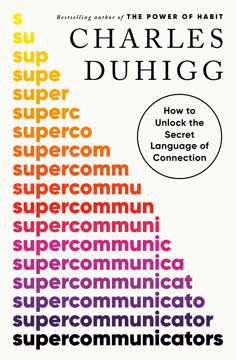
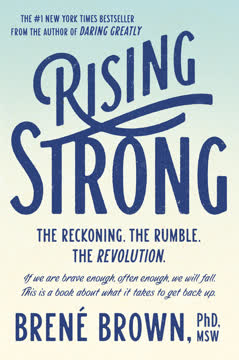
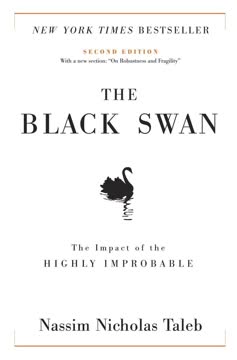
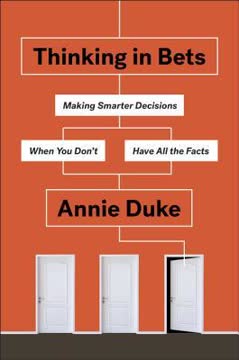
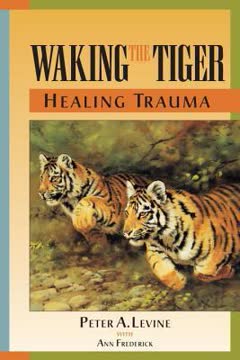


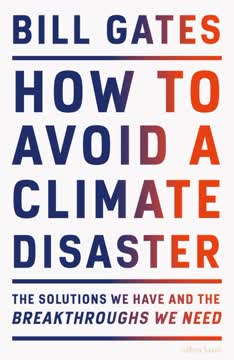
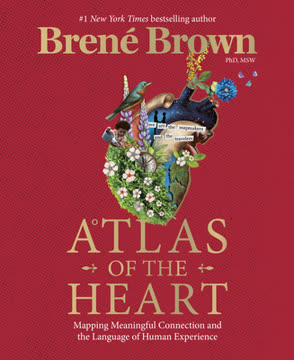
Download PDF
Download EPUB
.epub digital book format is ideal for reading ebooks on phones, tablets, and e-readers.
